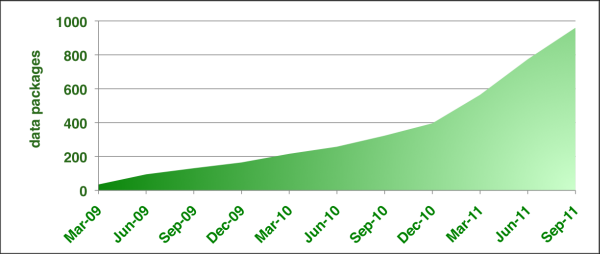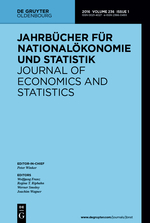Introducing DRYAD
Posted: January 6th, 2012 | Author: Sven | Filed under: Data Sharing, Projects | Tags: data publication | Comments Off on Introducing DRYAD Today I want to introduce Dryad – maybe many of you know it already because it is not a project that has just started, but a repository that was initially released in 2008.
Today I want to introduce Dryad – maybe many of you know it already because it is not a project that has just started, but a repository that was initially released in 2008.
As mentioned, Dryad is an international repository of data underlying peer-reviewed articles in the basic and applied biosciences, including biomedicine.
Dryad enables scientists to validate published findings, explore new analysis methodologies, repurpose data for research questions unanticipated by the original authors, and perform synthetic studies.
Dryad is governed by a consortium of journals that collaboratively promote data archiving and ensure the sustainability of the repository. Actually, Dryad contains 1228 data packages and 2953 data files, associated with articles in 100 journals.
The mission of Dryad is to preserve all the underlying data reported in a paper at the time of publication, when there is the greatest incentive and the ability for authors to share their data.
In addition Dryad wants to lower the burden of data sharing by providing one-stop data-deposition via handshaking with specialized repositories (the first two handshaking partners are TreeBASE and GenBank, which Dryad’s partner journals have previously identified as required points of deposition for phylogenetic tree data and DNA sequences) and assigns globally unique identifiers to datasets (e.g. by DryadUK also via DataCite), thus enabling data citations.
Beside, Dryad allows end-users to perform sophisticated searches over data (not only by publication, but also by taxon, geography, geological age, biological concept, etc) and journals and societies to pool their resources for one shared repository.
Dryad welcomes the involvement of journals, editors, publishers, authors and others who support data archiving. Authors may submit data files associated with their publications. Editors and journals can facilitate their authors’ data archiving by setting up automatic notifications to Dryad of accepted manuscripts, streamlining the authors’ process for depositing data.
Dryad curators do some quality control to ensure the electronic files are valid and contain what they advertise, but the final responsibility for data quality is in the hands of the submitter.
 Dryad submitters are required to place all data in the public domain using the Creative Commons Zero waiver. Others can share, copy, or reuse the data. Since some types of data are not eligible for copyright protection, this ensures that the data can be reused legally in all situations. According to scientific norms, others who use the data are still obligated to cite the original creator of the data. Authors depositing data may choose to embargo the data for a year after publication.
Dryad submitters are required to place all data in the public domain using the Creative Commons Zero waiver. Others can share, copy, or reuse the data. Since some types of data are not eligible for copyright protection, this ensures that the data can be reused legally in all situations. According to scientific norms, others who use the data are still obligated to cite the original creator of the data. Authors depositing data may choose to embargo the data for a year after publication.
Dryad is built upon the DSpace repository software with a number of customisations. All customisations not available within the main DSpace distribution are available from the Dryad code repository.
In my opinion Dryad is a very good example for a community driven approach to publish data together with their underlying research data and to preserve it for the future. To have an infrastructure in place where journals, editors, publishers and authors act together in a collaborative approach seems to be a very future-oriented and sustainable way for publishing publications with their underlying data and for improving the scientific process as a whole.
Here we really can see a little bit further, because we have the ability to stand on the shoulders of giants.
Graphics by http://datadryad.org/







